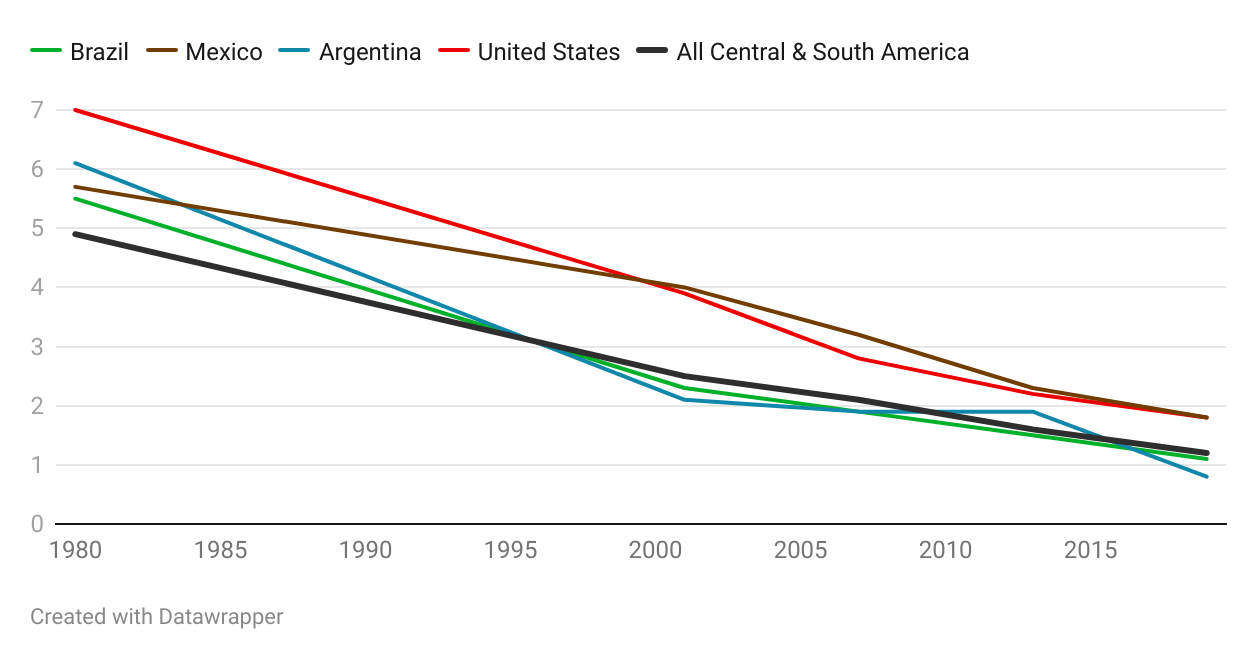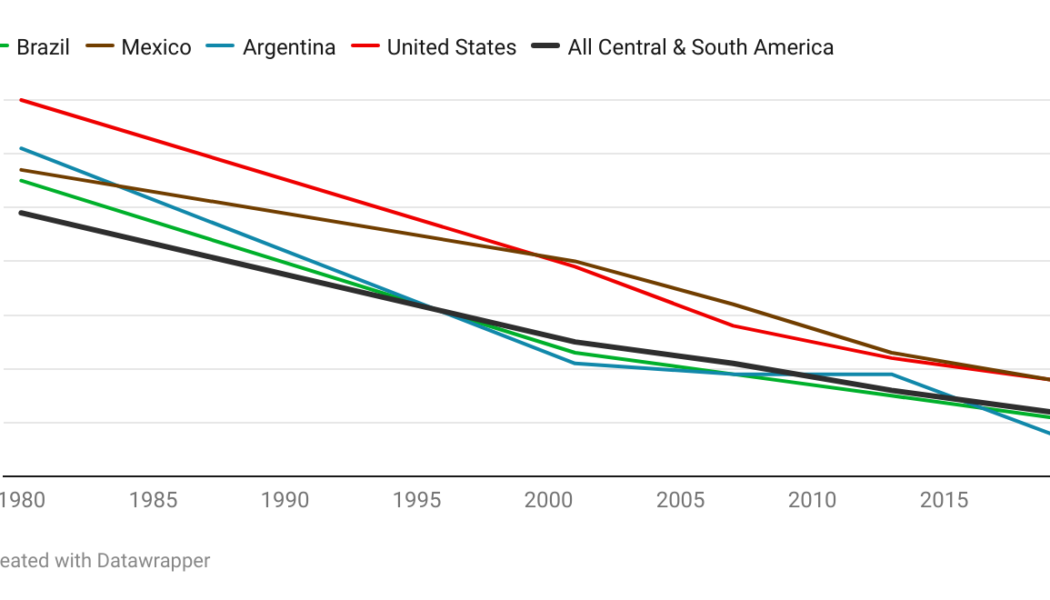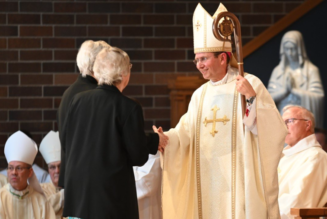
In an interview last week, Cardinal Christophe Pierre emphasized a focus in the Church on “synodality” — and focused on a 2007 meeting of South and Latin America’s bishops in the city of Aparecida, Brazil.
Pierre told America Magazine that when he arrived in the United States, he had been “shocked” to see that many U.S. bishops were unfamiliar with important developments in the synodal style of leadership — which he said was manifested at the 2007 Aparecida conference.
The Aparecida meeting, he told America, was “a kind of synodal process of the South American bishops.”
There, “the bishops developed a kind of dynamic of working together and looking for solutions together, to evangelize better, which is what the synod [on synodality] is all about. Nothing else: Better evangelization. And they accompanied the people in their suffering, in their difficulties, and in their challenges,” the cardinal said.
That 2007 Aparecida conference produced a document which the future Pope Francis helped to draft.
And for his part, Pierre told America that a better understanding of Aparecida, its document, and its effect in the Church across South and Central American could help the U.S. bishops to address declining rates of faith in their country.
But if the Aparecida approach is the model — it seems worth asking whether it’s worked.
In the wake of the Aparecida conference, has a phase change in evangelization resulted in a Church more alive, more evangelical, and more fruitful in South and Central America than in the United States?
Of course, it’s impossible to capture faith and evangelization entirely with the blunt tool of statistical data. But since Pierre argued that the U.S. suffers from empty churches and that — in other parts of the Americas — the Aparecida style has borne fruit, The Pillar took a look at the numbers.
—
The Vatican publishes an annual statistical report called the Annuarium statisticum ecclesia.
The report does not report rates of Mass attendance or other forms of daily or weekly practice, but it does track the number of baptisms and marriages in various places around the world, as well as the number of baptized Catholics.
The Vatican data shows very stable levels of Catholic affiliation for Brazil, Mexico, Argentina — and, indeed, for Central and South America as a whole from 1980 to 2019.
Brazil shows the most change, with the percentage of Catholics decreasing from 90% in 1980 to 84% in 2019.
In the same time period, the United States also shows a very stable — though lower — percentage of Catholics in its population: 22% in 1980 and 23% in 2019.
But those figures don’t tell the whole story, because the Church’s statistical yearbook says it counts the number of baptized Catholics in a place, and not the number of people who self-identify as Catholic.
But because even Catholics who do not regularly go to Mass often marry in the Church and have their children baptized, looking at the data on baptisms and marriages might give a clearer picture of how many Catholics practice their faith, at least at some minimal level, in different parts of the world.
That data suggests a significant and continuing decline in Catholic practice, both in the U.S. and throughout Central and South America.
The number of baptisms per thousand Catholics in Central and South America dropped by 44% between 1980 in 2007. In the same time period, U.S. baptisms per thousand Catholics dropped by 28%.
Since the 2007 Aparecida conference, the number of baptisms per thousand Catholics has dropped another 33% in Central and South America, while in the US the number has declined by 38%.
Brazil, where the Aparecida conference actually took place, has seen its number of baptisms per thousand Catholics drop to levels below that of the U.S., with just seven baptisms per thousand Catholics in 2019 as compared to 8.9 in the US.
The trend is similar with the number of marriages.
In 2019 the U.S. and Mexico were tied, with 1.8 marriages per thousand Catholics. For Central and South America as a whole, the number was 1.2 in that year. In Argentina it was only 0.8.
Those numbers suggest significant and increasing disaffiliation from the Church in Central and South America. That suggestion is confirmed by survey data from the World Values Survey.
While the Catholic Church considers baptized Catholics to remain Catholic throughout their lives, the WVS focus on self-identification, asking respondents, “Do you belong to a religion or religious denomination? If yes, which one?”
Responses to that question reveal whether respondents still consider themselves to be affiliated with the Catholic Church.
The results vary by country.
The U.S. and Mexico both show stable to upward trends over the five waves of the survey, from 1995 to 2022.
Argentina is somewhat down, from 76% in the 1995-1998 wave, to 69% in the 2017-2022 one.
Brazil shows the most dramatic change. In the 1995 to 1998 wave of the survey, 70% of respondents in Brazil described themselves as Catholic. In the most recent wave, only 46% described themselves as Catholic.
The World Values Survey also asks respondents how often they attend religious services.
In the most recent wave, the highest rate among Catholics in the four countries examined was in Mexico, where 47% of Catholics said they went to Mass at least once a week.
The lowest rate was in Argentina, where only 19% of Catholic respondents reported going to Mass at least once a week.
The U.S. fell in the middle with 35% of respondents saying they went to mass at least weekly.
Those trends have been fairly consistent over the last three waves of the World Values Survey, during which all four countries are consistently reported.
Of course, when the percentage of the population who describe themselves as Catholic is also dropping, even a steady rate of Mass attendance among self-described Catholics means a decreasing share of the total population.
The percentage of total Brazilian respondents who said they went to Mass weekly dropped from 28% in 2007 — the time of the Aparecida report — to 21% in the most recent wave of the survey.
That means that the number of Brazilians who darken the door of a church at least once a week has dropped by a quarter over the last 15 years.
Whatever effects the evangelization developed through the synodal process of Aparecida may have had, it does not seem to have resulted in the countries of Central and South America being more successful at retaining members than is the Church in the U.S.
Comments 21
Services Marketplace – Listings, Bookings & Reviews









